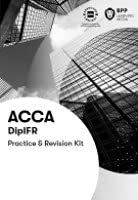Answered step by step
Verified Expert Solution
Question
1 Approved Answer
Canadian Tire sells car wash cleaners. Canadian Tire uses a perpetual inventory system and made purchases and sales of a particular product in 2020 as
Canadian Tire sells car wash cleaners. Canadian Tire uses a perpetual inventory system and made purchases and sales of a particular product in 2020 as follows: Jan. 1 Beginning inventory 120 units @ $ 7.30 = $ Mar. 7 Purchased Jan. 10 Sold Mar. 15 Sold July 28 Purchased Oct. 3 Purchased Oct. 5 Sold 70 units @ $15.80 = 330 units @ $ 6.60 = 125 units @ $15.80 = 580 units @ $ 6.40 = 530 units @ $ 6.30 = 730 units @ $15.80 = 876.00 1,106.00 2,178.00 1,975.00 3,712.00 3,339.00 11,534.00 Assume that Canadian Tire specifically sold the following units: Jan. 10: 70 units from beginning inventory Mar. 15: 25 units from beginning inventory, and 100 units from the March 7 purchase Oct. 5: 245 units from the July 28 purchase, and 485 units from the October 3 purchase Calculate cost to be assigned to ending inventory and cost of goods sold. (Round your final answers to 2 decimal places.) Ending inventory Cost of goods sold
Step by Step Solution
There are 3 Steps involved in it
Step: 1

Get Instant Access to Expert-Tailored Solutions
See step-by-step solutions with expert insights and AI powered tools for academic success
Step: 2

Step: 3

Ace Your Homework with AI
Get the answers you need in no time with our AI-driven, step-by-step assistance
Get Started


